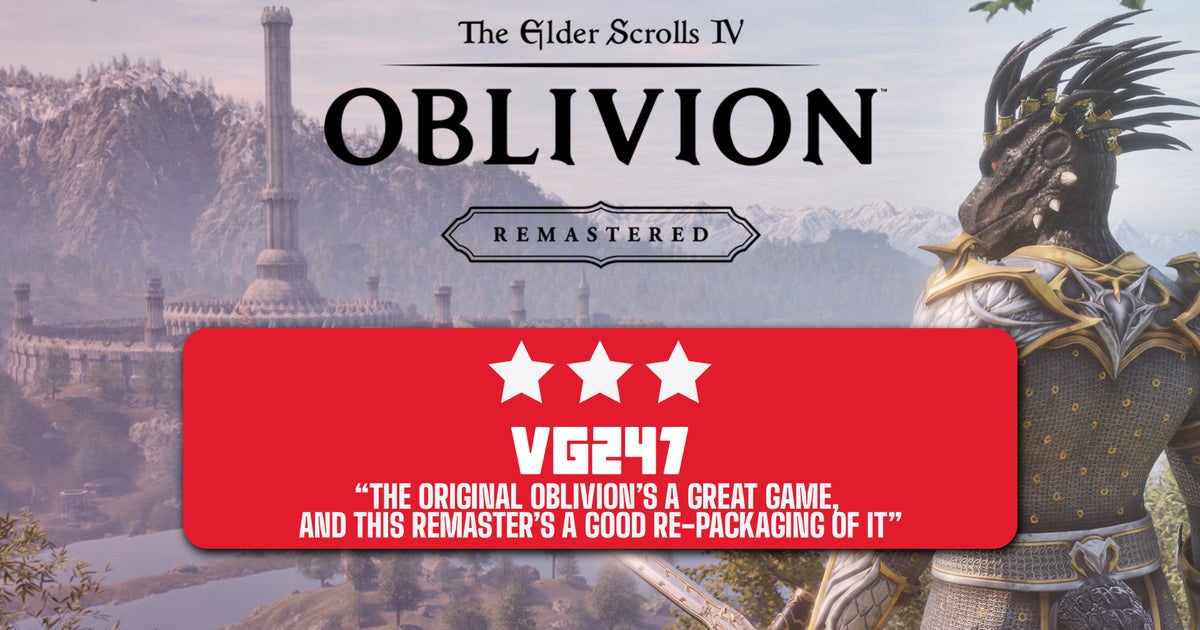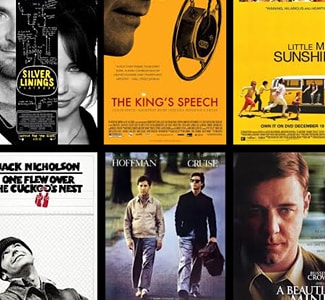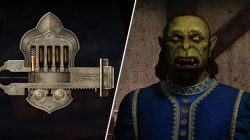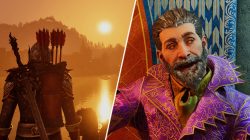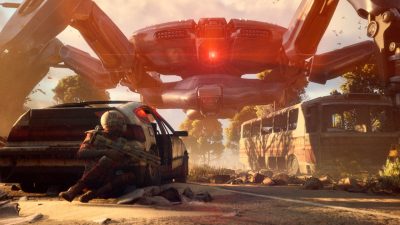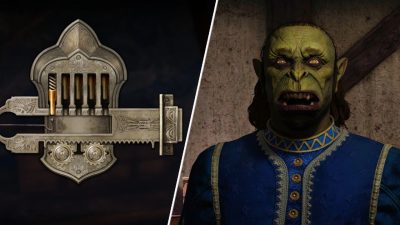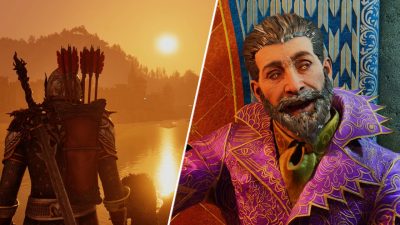Oblivion’s a great game, but does it really need a remaster?
It’s a question I joined plenty of other folks in asking as the rumours and leaks bubbled away, while Bethesda and Virtuos Games maintained radio silence to an almost hilarious extent. In many ways, it’s a useless question to ask – there are very few video games we’re anything close to needing, aside from maybe a new entry in the Burnout series.
Remasters invite these kinds of existential questions by their nature – the nagging thoughts asking whether all these resources and all of this time from talented devs might be being wasted in delivering a slightly re-decorated version of a cake we’ve already enjoyed – and in the case of Oblivion, can go for a second bite of the original whenever we like.
On the one hand, you could argue it’s verging on entitled to suggest that a game shouldn’t get a remaster just because you personally want something else. Then again, we’re on the weaker end of this power dynamic as consumers, and surely there’s nothing wrong with wanting your favorite studios not to keep releasing the same old thing again and again, rather than trying something that might be more interesting.
I thought that once I got my hands on Oblivion Remastered, once its scamps and Dremora dragged me back through the gate to Cyrodiil, these clouds of doubt would just float away. Of course this was a remaster worth making, just look at it! They haven’t, though. Having put over 30 hours into a game that’s familiarly unfamiliar so far, the clouds of doubt are still hanging about.
Oblivion Remastered, as you’ve no doubt heard, is ultra-faithful to the original game. More so than any of us who feared it might just end up being carved up into something a lot more Skyrim-cloney could ever really have hoped. As soon as you fire the remaster up – after waiting however long it takes to download the mammoth 120-ish GB that it’s ballooned to – you’ll be struck by the fresh coat of paint.

It’s the exact same province you remember, rendered with all of the extra fidelity that you’d expect from its Unreal Engine 5 icing. All of the vistas that blew you away back in the day, when your expectations for good graphics were far less close to the near-photorealism a lot of today’s big games boast, they’ll throw your socks at the ceiling again. There are distant mountains you can see looming in much better detail as soon as you exit the Imperial City sewers. If you emerge at dawn or dusk, you might catch the kind of impressive sunset or sunrise modern tech can deliver, or if you wait till nightfall, you’ll be under a detailed starscape and possibly able to make out the Aurora Borealis we all loved in Skyrim if you glance towards Bruma.
As you roam near the centre of the map, you’ll find your eyes drawn back to the glimmering spires of the Imperial City and the White-Gold tower, which dominates the landscape just as much as it did in the original. Cyrodiil was pretty breathtaking in 2006’s cartoony, near-potato vision, so of course it still is, especially since the remaster hasn’t toned down the vibrancy of the colours in the way some of us had feared. It’s enough to make you want to open up the photo mode this remaster surely has, so you can show all your mates how good it looks and maybe put together a few new desktop backgrounds, right? Nope, there isn’t one, and I struggled to even find a way in the settings to make the HUD temporarily disappear.
As a result, most of the screenshots I’ve taken are of Oblivion Remastered’s NPCs, which are by far the best part of this facelift; more realistic in a way that matches their revamped surroundings, but still regularly misshapen or just plain weird-looking in ways that perfectly match the flawed visages of their OG twins. There are still plenty of faces that’ll give you a good giggle, and I’d have it no other way. Some of them have beards and moustaches now! When it comes to your character, the stubble options look properly wacky if you dye them a non-natural colour. Of course, that only makes it easier to create an absolute monstrosity to rival the original’s famous array of horror show protagonists.
Sadly, the freaks and weirdos of Cyrodiil aren’t the only janky bit of the original to have remained intact in this game, which very much might be a terrifying Frankenstein’s monster of UE5 and classic under the hood. To be clear – if this remaster had sucked all of the jank out of Oblivion, that’d have been a travesty, but as I’ve played it, I’ve found numerous examples of not just the classic loveable jank we all remember so fondly, but the annoyingly buggy kind that you’d hope a revisit would finally fix.

The most prominent example was during the Thieves Guild quest, Ahdarji’s Heirloom. You can read a full rundown of what happened to me here, but the short version is this – I had to steal a ring, the ring didn’t spawn in the box it was supposed to (an OG Oblivion bug). Cue scrabbling around online for an old jury-rigging strategy that, luckily, still works in the remaster, otherwise I’d have been locked out of doing most of one of the game’s best faction questlines.
Also still a thing is it being borderline impossible to flee from combat — on a few occasions I put what felt like half of Cyrodiil between myself and any remaining hostile threat. Much closer to the realm of funny jank, but still a bit immersion-breaking, were issues like NPCs wearing skirts having those garments disappear, leaving them walking around with invisible pelvic regions. Also, why does poor Vicente Valtieri keep suddenly popping up totally bald and with eyes that won’t open? I get that Vampirism’s got some gnarly side-effects, but by the Nine!
Aside from these, there’ve been a few occasions when characters I had to talk to or barter with would briefly spawn in a state where doing so wasn’t possible, which isn’t ideal.
Moving on from the stuff that’s still there to the rest of the new additions, there’s a short list that I’ve felt have actually had a tangible effect on my enjoyment of this game I already loved in its previous form. It’s nice to be able to sprint, but I wouldn’t say it was something I’ve been crying for, given Oblivion’s acrobatics skill makes it ten times more fun to jump everywhere like a rowdy toddler on a bouncy castle.
Bow and spell combat using the third person camera now works like it should, meaning that aiming and actually being able to see the thing you’re trying to hit without your character’s body flopping into the way have been greatly improved. Melee feels pretty similar and still very 2006, despite the addition of hit reactions more complex that just an auditory ‘UUUUOOAGGGHH’. The most handy tweak is that the levelling system, while still something you’ve got to grind up through by doing — hello, all of that unnecessary bouncing – is much less punishing in terms of which skills you designate as major and minor.
.jpg?width=1920&height=1920&fit=bounds&quality=70&format=jpg&auto=webp)
You don’t need to be locked into having to focus on just those core strengths that may well turn out to not be as useful or key to your build as you start to progress, minor skills will help you progress, too. In my case has this been really useful, as I’ve naturally ended up levelling the likes of mercantile and speechcraft pretty high just by selling gear and doing quests, despite not having gone in with the intention of being an especially charismatic Dark Elf assassin. That said, you could argue something’s been lost by the game no longer forcing me to stick as rigidly to the unique path I’ve chosen. I’ve yet to try a second playthrough of the remaster, but there’s a chance my characters will end up being more Skyrim-esque masters of most but not quite all, in a manner that’s more power fantasy than the original.
Freely assigning specific skill points when you level up is less likely to come with any potential downsides in my book, so we can file that one away under the purely positive column. Meanwhile, it’s a huge boon to hoarders that being over-encumbered – something you will inevitably be many times during any Oblivion playthrough – no longer renders you totally unable to move, instead just forcing you to walk. The refreshed sneak detection UI, grab mechanics, and addition of empty container notifiers are all very Skyrim, but also very much no-brainer changes to make here.
One specific change that I’ve not been a fan of is how you access local maps. It takes zooming in all the way on the full province map, then pressing the same button again to go a step further. Once you know that’s how to do it, it’s fine, but the fact it took me ages to figure out what I needed to do meant my struggle felt just as down to the new method being a bit unintuitive as it did me being an idiot.
Aside from that, I’d say the rest has, for better or worse, blended into the background of the one thing this remaster is deliberately putting front and centre – all of the good stuff Oblivion already did. This was always the goal, Bethesda even put out a statement post-release confirming it. About four years of development time that saw it and Virtuos use today’s tools to create an enhanced carriage to carry a 20-ish year old game that it has complete and unwavering reverence for. That thing’s fun, just like the original was, but it comes in the context of a years-long wait for The Elder Scrolls 6 – the follow-up to a game that came out only five or so years after Oblivion did.
.jpg?width=1920&height=1920&fit=bounds&quality=70&format=jpg&auto=webp)
Oblivion Remastered deliberately stops short of going full remake – something that I’d have loved to have seen its creators (or curators) back themselves or more likely be allowed by Bethesda to do. After all, it’s the whole fresh interpretation of an old game aspect that’s central to my intrigue about the other Oblivion return we’re getting this year, Skyblivion. If you’re going to take all of this time and resources and use them to re-release Oblivion, rather than trying to remaster games like Morrowind or Daggerfall – which I can tell you from experience are far more alienating to newbies with the sensibilities and expectations modern gaming instils – or do a spin-off that’d add something fresh to the Elder Scrolls series, shouldn’t you at least try and make the most of it?
Use all of that new tech to deliver not just a polished version of something we’ve all played or could play at any time, but to unleash the version of that game you’ve always wanted to make. Don’t be afraid to make the battle at the Great Gate a proper spectacle, show us the massive and bustling trade hub that the Imperial City is in all of the glory you can, and make the conclusion to the Fighters Guild questline more than one person slaughtering five goons and then setting fire to a tree.
Properly breathe new life into the ageing creative elements you – and all of us — clearly hold in such high regard and view as so central to the identity of your studio as it exists now. Sheogorath invented music, and you had the chance to write a new symphony that builds on the narratives and adventures we fell in love with, and in so doing, help prove that TES 6 is going to be the return to the all-star form we’re all hoping for.
The original Oblivion’s a great game, and this remaster’s a good re-packaging of it. It’s an excuse to fire up an Elder Scrolls title that doesn’t feel a million miles from contemporary yet again, but I’m still not sure we needed one.
The Elder Scrolls 4: Oblivion Remastered is out now for PC, PS5, and Xbox Series X/S. It was reviewed on PC using a copy provided by the publisher.




